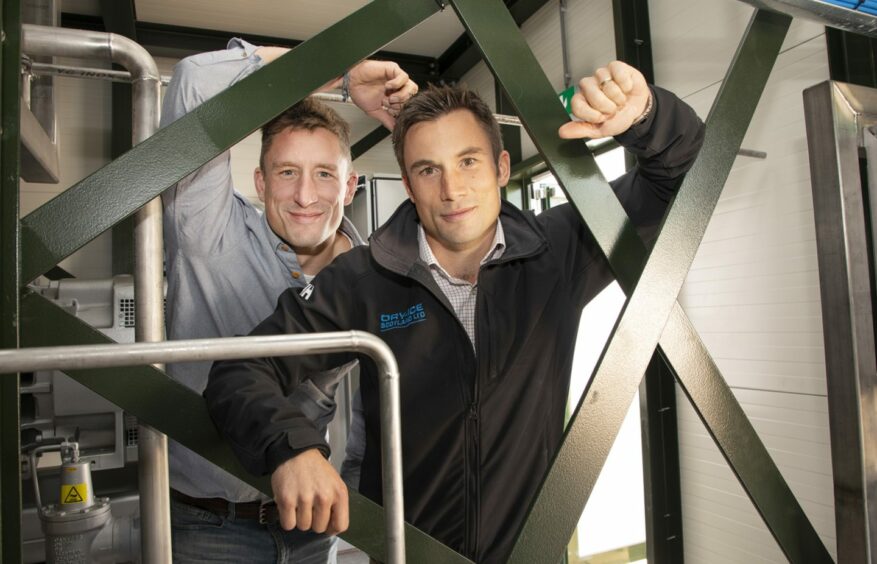Last year was a record-breaker for mergers and acquisitions (M&A), with publicly-disclosed deals worth more than £3.7 trillion completed worldwide.
On top of this, there is the not-insignificant value of transactions where the values have been undisclosed.
From a personal perspective, the corporate team at Aberdein Considine – which advises mainly owners, investors and management teams in the SME (small and medium-sized enterprise) space – has experienced one of its busiest spells on record.
We’ve seen strong activity across multiple sectors – including energy, technology and healthcare.
There seem to be a number of factors behind this uptick in activity, so we’ve taken a look at deals we’ve been involved in over the past 12 months and also considered trends we may see continuing in 2022.
While I think we’ve all just about had enough of the “c” word, I don’t think we can look back at 2021 without considering the direct and indirect impact of Covid-19.
In our experience, the pandemic and its wide-reaching social and economic effects, have acted more often as a trigger as opposed to a blocker for deal activity.
On the sell side, we’ve seen owner-managers accelerate retirement or exit plans due to economic uncertainty, “pandemic fatigue” and concerns about the medium to long-term impact of Covid-19 and potential future strains.
In some cases, this has also served to narrow the gap between vendors’ and acquirers’ expectations of value and structure.
This has resulted in some negotiations becoming unlocked as parties found common ground on deliverable deal valuations and structures.
Coupled with that, many sellers still have an eye on what may happen with capital taxes.
The mantra of “a bird in the hand is worth two in the bush” certainly has been and remains apparent as clients look to take advantage of current tax rates and reliefs while they remain in place.
It’s fair to say that, for many, the pandemic has prompted or brought forward a review of business strategy – causing some businesses to restructure and offload non-core assets.
This consolidation is something we have seen as a driver for several transactions in both the construction and energy sectors.
In addition, as government support measures have receded and the coronavirus business interruption loan scheme money and other indebtedness has had to be repaid, some businesses have become distressed and have, therefore, needed to look at accelerated M&A processes to preserve goodwill and jobs.
Although distress has certainly been present in the M&A arena, initially anyway, it was less prevalent than expected.
It will be interesting to see how the Q1 2022 numbers look, as the last set of statistics for 2021 did show a year-on-year increase in the number of corporate insolvencies.
This trend may continue through 2022 as the fall-out from the pandemic continues.
Turbo-charged business growth
On the buy side, the relatively low cost of borrowing, a wall of private equity funding and the number of businesses which have amassed significant cash reserves has meant certain acquirers and investors have been extremely well-placed to swiftly exploit M&A opportunities.
There is also an apparent desire on the part of many acquirers and investors to “turbo charge” growth which has perhaps otherwise stagnated over the past 22 months.
It will be interesting to see what impact the inflationary pressures and rising interest rates will have in this regard during the course of 2022.
Over the past 12 months we’ve been involved in a growing number of transactions where the stimulus has been the acquisition of a recurring-revenue model, in particular across the financial services, infrastructure and technology sectors.
Against the backdrop of general economic uncertainty, it’s clear to see the attractiveness of a recurring revenue business.
These transactions have often involved consolidators, where the ultimate aim has been to acquire contract-based income and, over time, integrate this with existing businesses.
This can deliver efficiencies, while improving profit margins and ultimate value.
It can perhaps be seen as a “win-win” as these deal structures and multiples will often provide sellers with a lucrative and clear exit path.
Energy transition impact
Undoubtedly, as the political, economic and social focus on the energy transition has continued to ramp up, so too has the M&A activity which can be attributed to businesses and investors diversifying out of traditional markets and looking to add or grow a capability in renewables, for example.
We’ve seen this take the form of outright acquisitions, with a view to a repositioning in the marketplace, and investment in early-stage technology businesses set up to support green energy.
Last year we were delighted to support Dry Ice Scotland with its landmark investment in a Scottish carbon-capture facility for the production of CO2 for the UK market.
This is a perfect example of the clear appetite of debt and equity investors to support experienced and skilled entrepreneurs with a proven track record in delivering new green opportunities.
More clean tech deals ahead
With continuing momentum in this area, we expect to see further deal activity in clean technologies during the course of 2022.
We’ve also continued to see proprietary technology generally underpin many deals during the past 12 months – both in terms of investment and as a driver for acquisitions.
This has been evident across multiple sectors where acquirers and investors have looked to the potential upside of exploiting proven technology with new customers and in new markets.
There remains a huge focus on people in terms of energy sector M&A.
The north-east has been and continues to be richly served in terms of its skills, expertise and entrepreneurship – and undeniably this remains attractive to acquirers and investors, including those from overseas markets.
We’ve noticed a significant increase in client instructions to implement management-incentive plans and growth share schemes over the past 12-18 months, as business owners look to “tie in” key members of their management teams as workforces revaluate their priorities.
It feels like all of the factors which we experienced in 2021 will feature to a greater or lesser extent in 2022 – which is off to a busy start, with a positive pipeline of activity.
Ritchie Whyte is a partner and head of the corporate and business advisory team atlaw firm Aberdein Considine.
Dry ice duo looking for opportunities to expand their business around Scotland
By Ian Forsyth
Scottish manufacturer Dry Ice Scotland is among businesses supported by Aberdein Considine last year.
The Perthshire-based company is spending £4.5 million on a new production site plus CO2 capture equipment.
Dry Ice Scotland will use a facility in Dumfriesshire to capture, purify and liquefy food-grade CO2 and produce dry ice.
The CO2 comes from a nearby anaerobic digestion plant which breaks down organic material.
Dry Ice Scotland is run by brothers Richard and Ed Nimmons.
Richard didn’t enjoy his job offshore and invested all his money in a dry ice blasting machine, used for cleaning oil and gas components.
The business started in their parent’s garage, but using CO2 imported from Europe quickly became very expensive.
In February 2019 the brothers sold a subsidiary company and a seven-figure cash injection allowed them to truly get Dry Ice Scotland off the ground.
The firm has been busy throughout the pandemic.
Dry ice has a variety of uses, including blasting, freeze drying and the transportation of frozen goods.
At the new site, Dry Ice Scotland will take CO2 in gas form and produce both liquid CO2 and dry ice.
Carbon benefit
Production capacity is expected to reach 8,000 tonnes per year, with the firm becoming one of the top three UK producers of dry ice.
The new facility means Dry Ice Scotland will save one tonne of CO2 per hour from the neighbouring digestion plant from going into the atmosphere.
The Nimmons brothers hope to open more production facilities around Scotland to meet demand and prevent CO2 from being wasted.
To help pay for the new site, the company secured £3m from Nash Business Capital.
Michael Currie, a corporate partner with Aberdein Considine, and colleague Gemma Perfect, a partner in the firm’s commercial real estate team, provided Dry Ice Scotland with support in relation to both the financing and property transaction.







